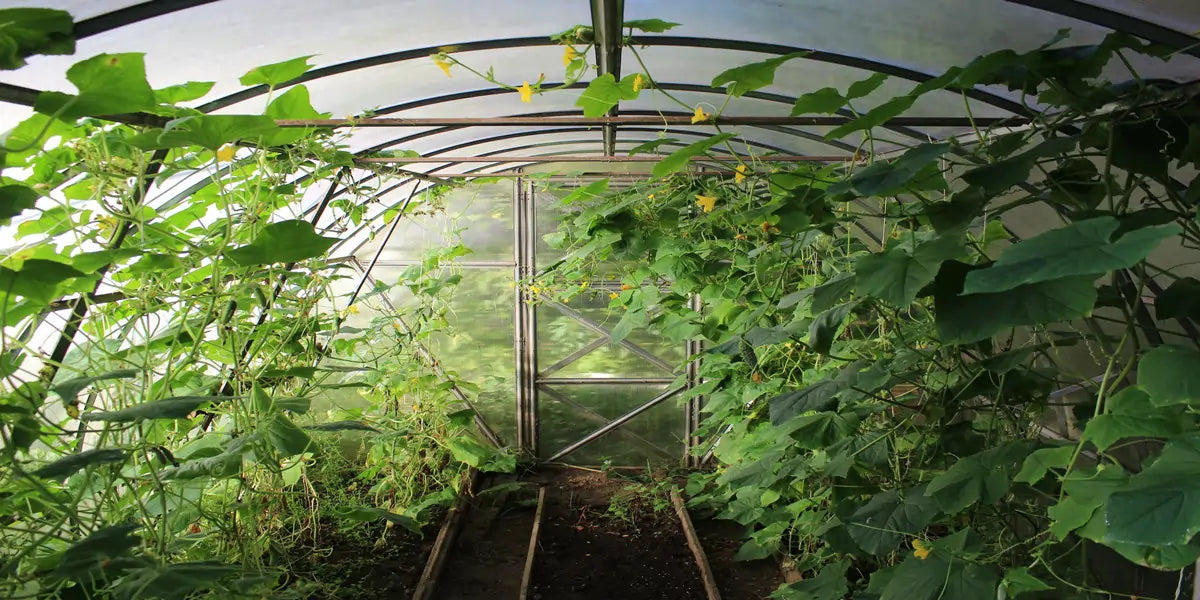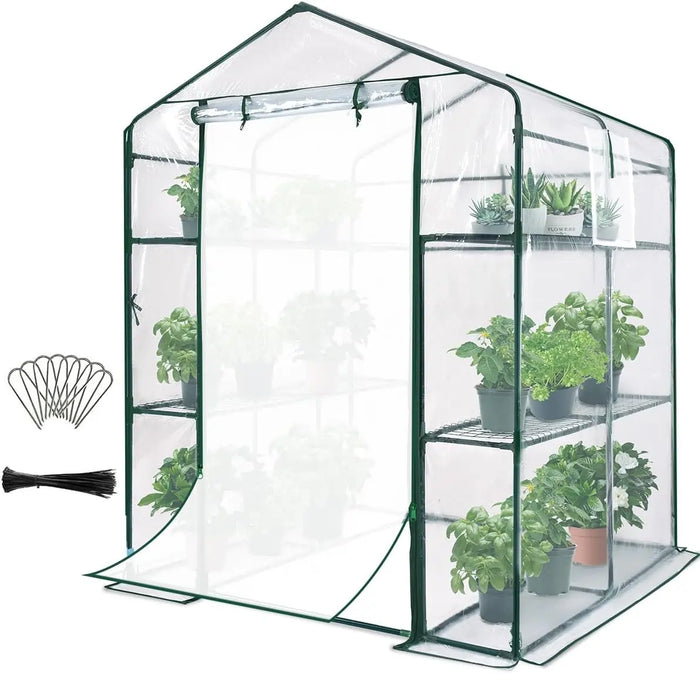We discussed the sources and identification of pests and diseases in the last blog. If you find that your greenhouse is being attacked by pests, you should take immediate action to minimize the damage. If no pests are found, you should learn about greenhouse management to prevent them.
How do get plants rid of disease and pests?
Use a hose or spray bottle
Water is the easiest way to get rid of pests. Spraying the plants with a hose or spray bottle will keep the pests away from the plants. When spraying, watch carefully, and don't ignore shady surfaces and corners. Pests are likely to hide in these areas. Many pests are very small and take careful observation to find them. Be careful and slow down as the plant cleaning task proceeds.
Introduce beneficial insects
Let beneficial insects help you eliminate pests. Ladybugs and lacewings are common beneficial insects.

(2 lady bug on green leaf)
Although ladybugs and lacewings cannot completely defend against pest outbreaks, they can serve as a good supplemental defense. To attract beneficial insects, you can plant their favorite flowers in your garden.
Spray eco-friendly insecticide sprays
If you can't use gentle methods to eliminate pests, you can also try eco-friendly insecticidal sprays. We recommend pyrethrum, a plant spray made from chrysanthemum flowers that is non-toxic to humans. Spraying allows you to cover more areas and is more efficient than simple cleaning. However, plant sprays are more costly and may be harmful to other animals.
How do you manage your greenhouse?
Scientific greenhouse management can help a lot in preventing pests and diseases. Successful greenhouse management helps greenhouse production.
 (tunnel greenhouse)
(tunnel greenhouse)
Master the following greenhouse management tips to keep pests and diseases away from your greenhouse.
Bring only clean plants into the greenhouse
Plants can be used as carriers to bring pests inside the greenhouse. To solve this problem, gardeners should buy plants from a certified and reliable flower market or plant store.
 (hanging potted plants)
(hanging potted plants)
Try to grow crops from seeds so that there is less risk. If conditions allow, set up an isolated greenhouse outdoors. Put your newly purchased plants inside this safe space and observe their condition. After making sure they are healthy, move them into the greenhouse.
Portable greenhouses can be used as temporary greenhouses. You don't need a big temporary greenhouse, a mini greenhouse or a walk-in greenhouse will do.
71" x 36" x 36" Mini Greenhouse. This mini greenhouse is great for the temporary storage of potted plants. It fits most backyards.
- Frame: 16(dia.)*0.3/0.4mm Frame Steel with powder coating
- Total weight::9 lb
- Benefits: Excellent Fabric, Easy Management, Extended Cover
56" x 56" x 77" Walk-in Greenhouse. This walk-in greenhouse is easy to set up. It is ideal for people with limited mobility.
- Frame: 16mm Frame Steel with powder coating
- Total weight::25.8 lbs
- Benefits: Wide Side Velcro, Unique Door Design, Large in Size
Repair broken doors and windows in time
Usually, greenhouses have two doors as well as multiple vents. Pests can enter through broken doors or vents. Gardeners should check their greenhouses frequently and make sure there are no breaks inside. If a broken door or window is found, it should be repaired promptly.
Good greenhouse environment
If a greenhouse is not clean, the potential for disease and pest transmission is high. To maintain a good greenhouse environment, you should:
Weed the interior and exterior of the greenhouse regularly.
 (man checking plants)
(man checking plants)
Make sure the ground is dry and free from water damage.
Remove plant debris on time.
Pay attention to hygiene
Do not place plants or pots on contaminated surfaces. If you wish to reuse pots, remove any soil mixture left on the pots and soak them in a disinfectant for 15 minutes, then rinse and disinfect. Put on disposable gloves and work clothes before each entry into the greenhouse.
Planting Sentinel Plants
Sentinel plants are single plants that are planted in the crop area. Sentinel plants are planted to facilitate monitoring as well as to detect timely signals of pests or diseases. Plant sentinel plants where you can easily see them. If problems arise, promptly record detailed instructions and dates.
Control the amount of watering
Too much or too little watering can have adverse effects on greenhouse plants. Too much or too little water can lead to disease. Give enough water to the roots of the plant rather than just watering the surface of the plant. We recommend drip irrigation for your watering.
Controlling humidity in the greenhouse
Humidity is the most difficult factor to control in a greenhouse.
Insufficient humidity can cause plants to dry out, stunted growth, and lower leaves to fall off, resulting in low yields.
 (a man watering plants)
(a man watering plants)
Excessive humidity will directly lead to foliar and plant root diseases, and will also cause problems such as slow plant growth and reduced yield. Gardeners need more insecticides to control diseases, which can make plants weaker.
Provide proper ventilation
Ventilation is important for any greenhouse crop. Fans are a common ventilation facility. Whether you use an open or closed greenhouse system, you should have ventilation in your greenhouse. Healthy plant growth requires flowing fresh air.
Appropriate plant spacing
Each plant should be well-spaced from the other. Gardeners should avoid crowded plants, which can interfere with air circulation.
 (potted plants in greenhouse)
(potted plants in greenhouse)
Prune vines promptly and remove plant debris as well as diseased foliage. Weeds can interfere with air circulation and regular weeding is necessary.
Choose the right variety
Not all plants are suitable for growing indoors. For greenhouse environments, gardeners should choose plants that are suitable for indoor growth and are resistant. Herbs such as lavender and rosemary as well as plants such as tomatoes, grapes, papayas, and cucumbers are suitable for growing in a greenhouse.
Recommended equipment for spraying pesticides in greenhouses
Large capacity hydraulic sprayer. Large-volume sprayers have high flow rates and produce large spray droplets. This facility is suitable for large greenhouses.
Low-volume spray droplets. This equipment has a lower flow rate and produces smaller droplets and less spray volume. This type of facility can be used topically in greenhouses.
Conclusion
Scientific greenhouse management can reduce the risk of greenhouse plants being infected by pests and diseases. We hope that these methods listed for you will help you optimize your greenhouse management. Good luck with your greenhouse plants!










